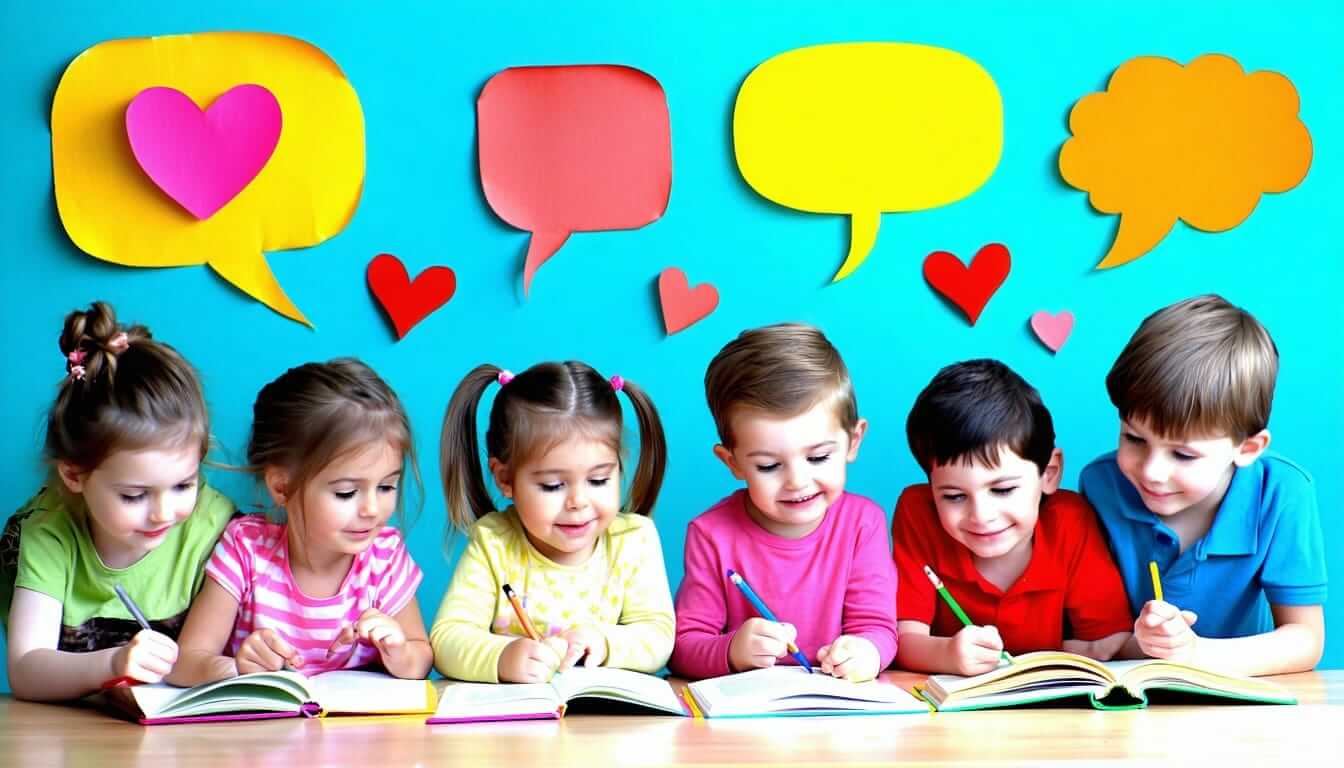Importance of Teaching Respect
Teaching respect in your home or classroom significantly influences your child’s development, especially in promoting empathy and ensuring effective communication. Here, we explore the impact of respect on empathy and the broader benefits of instilling respectful behavior in children.
Impact of Respect on Empathy
Teaching respect is foundational in developing your child’s capacity for empathy. Empathy is a learned skill that thrives when children respect others. This inherent respect encourages them to connect emotionally and understand different perspectives, fostering a sense of compassion for their peers and adults alike (Brightwheel).
Children who respect others are more likely to engage positively with their environment and form stronger relationships. This process of understanding and valuing the feelings of others ultimately enhances their social interactions and emotional intelligence.
Benefits of Teaching Respect
The advantages of teaching respect extend beyond individual relationships. Respect helps children navigate social situations effectively. Learning to be respectful enables children to communicate clearly with adults and peers, recognize social cues, articulate their thoughts, and respond appropriately in various settings. This skill set is crucial for behavior management and contributes to creating positive learning environments (Brightwheel).
Here’s a table summarizing some key benefits of teaching respect:
| Benefit | Description |
|---|---|
| Enhanced Communication | Encourages effective interaction with peers and adults. |
| Improved Social Skills | Aids in understanding social cues and adapting behavior in diverse situations. |
| Development of Empathy | Fosters emotional intelligence and compassion for others. |
| Boosted Confidence | Creates a safe space where children can express themselves freely. |
| Positive Learning Environment | Supports calmer, more respectful environments conducive to learning. |
Modeling respect is equally vital in teaching this value. Children often emulate adult behavior. Demonstrating respect to others and yourself, coupled with engaging in respect activities for kids, effectively instills these principles in your child. Encouraging respect also nurtures individuality by fostering acceptance, enabling children to feel more confident in expressing their thoughts and emotions.
For further insights on instilling respect in young ones, consider exploring teaching respect to children and respect lessons for kids.
Building Empathy Through Respect
Teaching respect through empathy is crucial for your child’s development. By fostering an environment that encourages both respect and empathy, you enhance their social skills and emotional intelligence.
Developing Empathy in Children
To effectively nurture empathy in your children, you can engage them in activities that highlight the importance of understanding others’ feelings. Empathy is a learned behavior, and when children learn to respect everyone, it significantly enhances their capacity for empathy. This can be achieved by discussing different perspectives during conversations and encouraging your child to consider how others might feel in various situations.
| Activity Type | Description | Outcome |
|---|---|---|
| Role-Playing | Encourage children to act out scenarios where they must identify feelings. | Enhanced understanding of emotional cues. |
| Storytelling | Share stories that depict diverse characters and their experiences. | Increased ability to relate to others. |
| Community Service | Involve children in community service activities. | Development of kindness and respect towards others. |
These activities not only teach respect but also help children effectively communicate with both adults and peers, understand social cues, express themselves, and use appropriate communication in various settings (Brightwheel).
Teaching Empathy Through Modeling
Modeling respect is a powerful way to instill respect and empathy in children. Children often imitate adults, so demonstrating respectful behavior in your interactions is crucial. Actively showing respect to others and to yourself sets a positive example for your child to follow. Engage in activities that display respect, such as greeting others courteously or listening attentively when someone speaks.
Here are some ways to model respect at home:
| Behavior Type | Example |
|---|---|
| Verbal Communication | Use polite language when speaking to others and encourage your children to do the same. |
| Active Listening | Show your child how to listen without interrupting when someone else is talking. |
| Acknowledgment | Recognize and appreciate the efforts of others, no matter how small. |
Additionally, encouraging respect in educational settings promotes the values of diversity, equity, and inclusion. This approach empowers your children to celebrate both similarities and differences among people (Brightwheel).
Incorporating these strategies into your daily interactions will greatly aid in building respect and empathy, contributing to character development in your children. For more insights on practical activities, consider exploring respect activities for kids and character building activities for kids.
Strategies for Teaching Respect
Teaching respect through empathy is vital for fostering kindness and understanding in children. Several strategies can help parents instill these values effectively.
Encouraging Diversity and Inclusion
Creating an environment that respects diversity is essential. It involves celebrating the differences and similarities among children. Encouraging your child to appreciate diverse cultures and perspectives promotes values of equity and inclusion. When children learn to respect others, they develop a sense of belonging and kindness toward individuals regardless of their background Brightwheel.
Here are some effective ways to encourage diversity and inclusion at home:
| Activity | Description |
|---|---|
| Diverse Book Reading | Introduce children to books from various cultures and backgrounds. Discuss the stories to highlight differences and similarities. |
| Cultural Celebrations | Celebrate different cultural holidays in your home. This can include preparing traditional dishes, wearing cultural clothing, or learning about the customs associated with those celebrations. |
| Friendship Discussions | Encourage your child to talk about their friends’ backgrounds. Ask them what they find interesting and valuable about their friends’ experiences. |
Empathy-Based Classroom Activities
Integrating empathy into classroom activities is crucial for teaching respect. Activities that promote empathy help children understand and connect with others’ feelings. These experiences can include role-playing scenarios that encourage children to think about how someone else might feel in a given situation. Research shows that empathy is key to developing positive friendships and reduces conflicts Big Life Journal.
Some empathy-based activities could include:
| Activity | Purpose |
|---|---|
| Perspective-Taking Games | Encourage children to describe how they would feel in different challenging situations, fostering understanding of diverse feelings. |
| Compliment Circle | Have children sit in a circle and take turns complimenting one another, emphasizing the impact of kind words. |
| Emotion Charades | Children can act out different emotions without speaking, helping peers guess the emotion. This enhances their ability to recognize and understand feelings. |
For more interactive methods, consider looking into respect activities for kids.
Establishing Respectful Communication
Teaching children how to communicate respectfully serves as a foundation for their social interactions. Practices such as active listening, where the HEAR strategy (Halt, Engage, Anticipate, Replay) is employed, can enhance empathetic relationships among children Edutopia.
To establish effective communication, encourage the following:
| Strategy | Description |
|---|---|
| Active Listening | Teach children to listen attentively, making eye contact, and responding to the speaker’s thoughts and feelings. |
| Ask Questions | Encourage children to ask open-ended questions to show interest and spark conversations about feelings and experiences. |
| Expressing Feelings | Model how to articulate feelings calmly and respectfully. Use phrases like “I feel” to express emotions without blaming others. |
Implementing these strategies will help in promoting respectful interactions and understanding among children. For additional resources, check our guide on teaching respect to children.
Creating a Positive Classroom Environment
Creating a positive classroom environment is essential for fostering respect and teaching empathy. This promotes a culture where children feel safe, valued, and respected. Here are two key aspects to consider: empathy in inclusive classrooms and the impact of Social-Emotional Learning (SEL).
Empathy in Inclusive Classrooms
Empathy plays a crucial role in building an inclusive classroom where every child feels understood and appreciated. When you encourage empathy among your children, they learn to take perspective, set aside judgment, and try to understand the feelings of those around them. This approach helps students feel heard and valued, creating a more harmonious learning atmosphere (Understood).
Research indicates that schools prioritizing empathy and inclusivity demonstrate significantly higher academic outcomes compared to those focused solely on academic capabilities. When students feel supported and comfortable, they are more likely to engage positively in classroom activities (Positive Action).
Empathy in the classroom involves:
| Empathy Feature | Description |
|---|---|
| Perspective-taking | Encouraging children to see situations from others’ viewpoints |
| Active listening | Teaching children to listen without preparing their response |
| Emotional validation | Acknowledging and respecting others’ feelings without offering quick solutions |
Classrooms that integrate these features result in improved relationships between peers, enhanced conflict resolution skills, and a greater overall understanding of one another. It is noted that at Pineview Elementary School, the incorporation of mindfulness practices caused students to show increased understanding towards their peers (Positive Action).
Impact of Social-Emotional Learning (SEL)
Implementing Social-Emotional Learning (SEL) in the classroom can significantly enhance the emotional and social climate. SEL helps children understand and manage their emotions, develop empathy, build positive relationships, and make responsible decisions. You can integrate SEL into your teaching strategies through specific activities, enhancing both behavior and overall classroom environment (Impact Teachers).
Research shows that active listening and empathetic communication foster a more respectful learning space, addressing challenges such as students feeling shy or hesitant to participate. Here are some benefits of incorporating SEL into your classroom:
| SEL Benefits | Description |
|---|---|
| Improved Emotional Understanding | Helps children identify and regulate their own emotions |
| Enhanced Relationships | Builds connections among peers and nurtures a sense of belonging |
| Conflict Resolution Skills | Equips students with tools to resolve disputes amicably |
By incorporating SEL practices into daily lessons, you can prepare children to be more respectful individuals and empathetic peers. This focus on emotional intelligence not only fosters personal growth but also contributes to a supportive classroom environment where all students thrive. To explore activities that support respect education, visit our page on respect activities for kids.
Encouraging Respectful Relationships
Fostering respectful relationships is essential for building character in children. It involves not just teaching them how to treat others but also how to recognize and value their own worth.
Recognizing and Addressing Disrespect
You can help your child learn to recognize disrespect in relationships, which may arise from peers, family members, or anyone they interact with. Disrespect can lead to feelings of inadequacy, worthlessness, or being unwanted. Teaching your child to identify such behaviors is the first step in addressing them.
Here are some signs of disrespect your child should be aware of:
| Signs of Disrespect | Description |
|---|---|
| Dismissive behavior | Ignoring opinions and feelings |
| Name-calling | Using hurtful language |
| Bullying | Intimidating or threatening behavior |
| Breaching boundaries | Not respecting personal space or privacy |
When your child identifies disrespect, encourage them to take proactive steps such as showing respect in return, setting personal boundaries, and communicating clearly about how they feel. It’s also important for them to seek support from trusted individuals, like you or a counselor, when they face disrespectful behavior (Kids Helpline).
Promoting Self-Respect Among Children
Understanding and promoting self-respect is vital for your child’s emotional well-being. Encourage your child to accept themselves and instill a sense of worthiness. Teach them that engaging only in respectful relationships is crucial for their happiness and self-esteem.
Here are effective ways to promote self-respect in your child:
| Strategies for Promoting Self-Respect | Description |
|---|---|
| Open discussions | Talk about feelings, strengths, and areas for growth |
| Encouraging hobbies | Support interests that enhance confidence |
| Modeling behavior | Demonstrate self-respect in your actions |
| Acknowledging achievements | Celebrate both small and large accomplishments |
Instilling the mindset that ending relationships lacking respect is an act of self-respect can empower your child. They should understand that their well-being comes first, and healthy relationships are built on mutual respect. For further resources, you can explore teaching respect to children and respect activities for kids.
Cultivating a Culture of Respect
Fostering a culture of respect in your home and community is essential for nurturing empathy in children. By celebrating diversity and inclusivity, and instilling respect in social circles, you can enhance your child’s understanding and appreciation of others.
Celebrating Diversity and Inclusivity
Encouraging respect in your household promotes values of diversity, equity, and inclusion. Teaching children to respect others involves treating everyone with kindness, regardless of their background. This approach empowers children to celebrate similarities and differences among people, thereby enriching their interpersonal skills (Brightwheel).
Create activities that highlight diverse cultures, traditions, and perspectives. Here are some methods to celebrate diversity at home:
| Activity | Description |
|---|---|
| Cultural Days | Dedicate a day to explore a specific culture through food, music, and stories. |
| Inclusive Books | Read books that feature characters from various backgrounds and discuss their experiences. |
| Community Events | Attend local events that embrace different cultures and celebrate inclusivity. |
A positive environment that prioritizes empathy and inclusivity leads to improved academic outcomes. Schools focusing on these principles often see increased student engagement and lower rates of bullying. For example, Pineview Elementary School in Florida reported a significant improvement in grades after implementing empathy and inclusivity-based learning, showcasing how these values impact overall well-being (Positive Action).
Instilling Respect in Social Circles
Encouraging your child to engage in diverse social circles can significantly influence their capacity for respect and empathy. Teach them the importance of recognizing and valuing differences in others and how this contributes to a more inclusive environment. Research indicates that inclusive settings foster greater empathy, with students in these environments being 7% more likely to demonstrate understanding towards their peers (University of Illinois College of Education).
Some strategies to instill respect in social settings include:
- Model Respectful Behavior: Demonstrating respectful communication and interactions serves as a powerful lesson for children.
- Encourage Friendships: Motivate your child to befriend peers from varying backgrounds; this can widen their perspective and foster mutual respect.
- Discuss Boundaries: Teach your child to understand and respect personal boundaries in friendships.
By fostering a culture of respect and inclusivity, you equip your child with the tools needed to navigate social situations and develop into empathetic individuals. For more ways to support this process, check out our articles on teaching respect to children and building respect in children.




